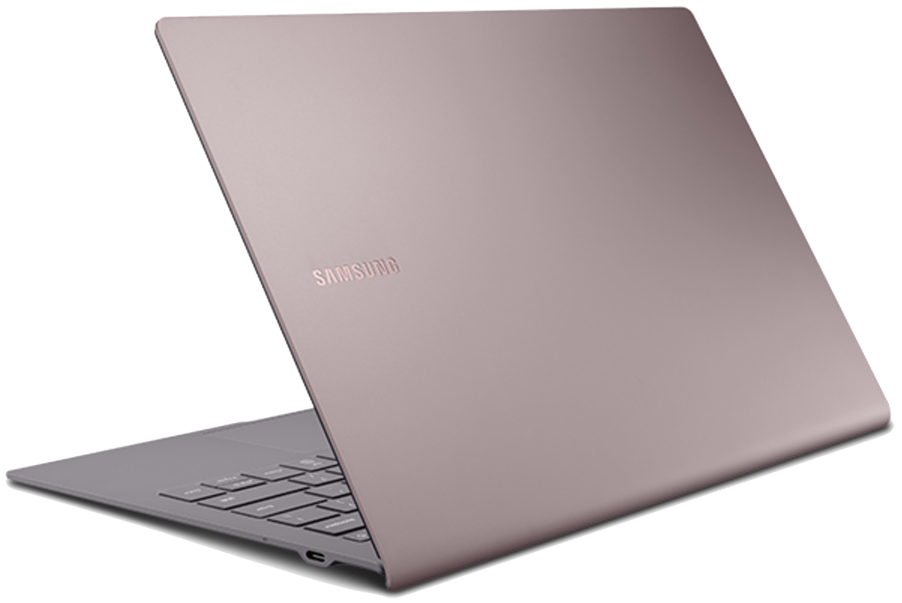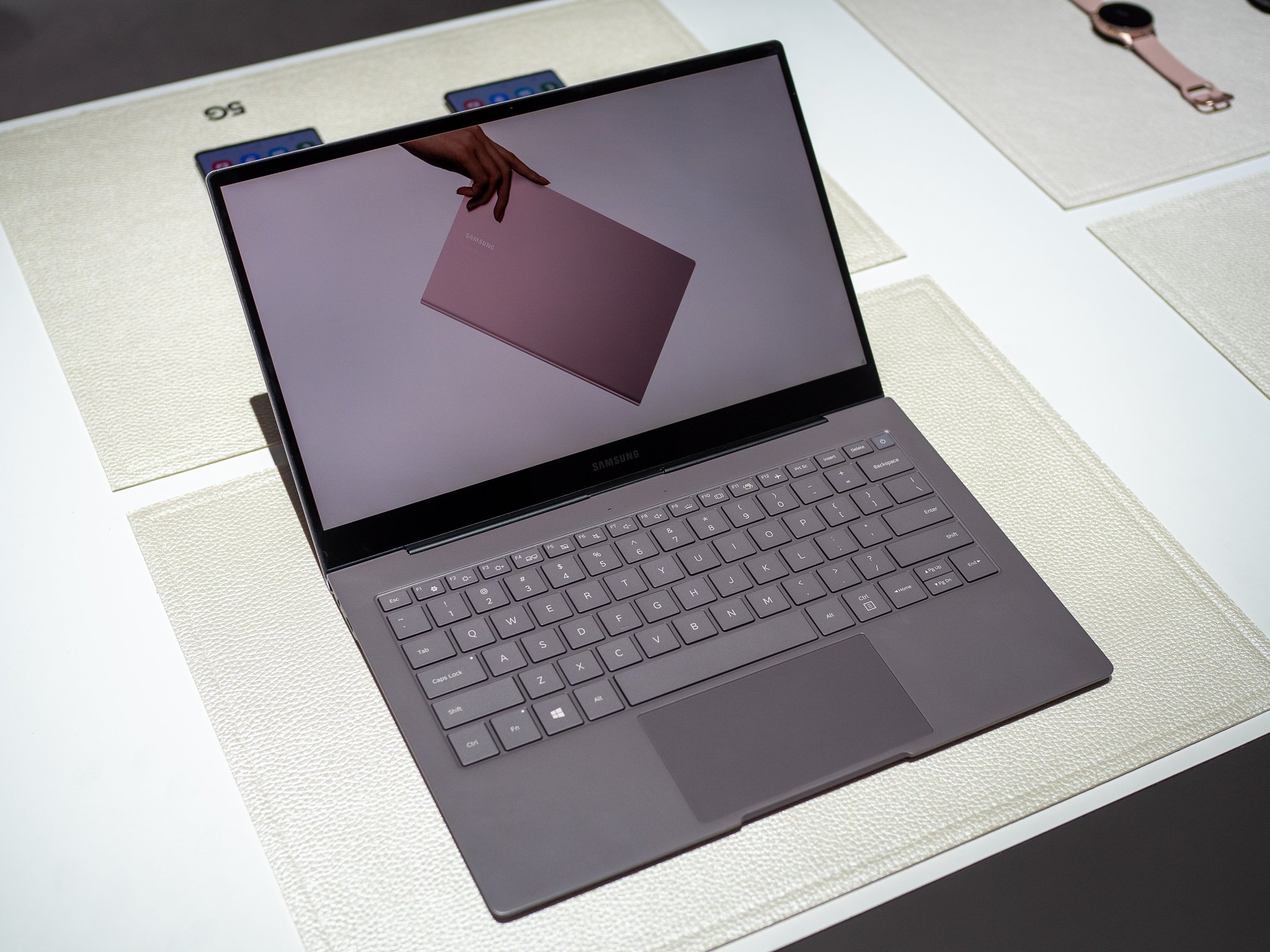Slim, Premium 2-in-1
Microsoft Surface Pro X
Pros
- High-res touch display with 3:2 aspect ratio
- Excellent battery life
- Outstanding hardware design
- More configurations to choose from
- 4G LTE SIM and eSIM
Cons
- Slim Pen and keyboard cost extra
- 2-in-1 form is not as stable on a lap
Microsoft's Surface Pro X is the thinnest and lightest Surface device around, and it's meant for those who need an LTE-enabled 2-in-1 device for productivity work. It can do the same things as the Galaxy Book S, but with a higher-res display with 3:2 aspect ratio and a slightly faster processor (CPU). More configurations are available, though you will pay dearly for the higher-end models.
Ultraportable Notebook
Samsung Galaxy Book S
Pros
- Includes microSD card reader and 3.5mm audio jack
- Fingerprint reader for Windows Hello
- Impressive battery life
- No extra cost for keyboard
- 4G LTE SIM
Cons
- 16:9 display aspect ratio
- Not quite as much performance
- Currently only one configuration option
Samsung's Galaxy Book S uses a clamshell notebook design, but it's still incredibly thin and light. It delivers more ports than the Pro X, performance is nearly on par for productivity work, and it offers LTE connectivity so you can stay in touch everywhere. The 16:9 aspect ratio and lower-res display might not be as appealing, but this is still a knockout mobile device for anyone on the move.
These two PCs have similar hardware inside, but they differ in form factor, display, and some features. Let's break down the specs you can find on each laptop before moving on to a closer look to help you decide which is a better buy.
Surface Pro X vs. Galaxy Book S tech specs
| Surface Pro X | Galaxy Book S | |
|---|---|---|
| Processor | Microsoft SQ1 Up to 3,000MHz |
Qualcomm Snapdragon 8cx Up to 2,840MHz |
| RAM | 8GB, 16GB LPDDR4x | 8GB LPDDR4x |
| Storage | 128GB, 256GB, 512GB SSD | 256GB SSD |
| Display size | 13 inches Touch |
13.3 inches Touch |
| Display resolution | 2880x1920 | 1920x1080 |
| Aspect ratio | 3:2 | 16:9 |
| Graphics | SQ1 Adreno 685 | Adreno 680 |
| Ports | Two USB-C Surface Connect |
Two USB-C 3.5mm audio microSD card reader |
| Connectivity | Wi-Fi 5 LTE Bluetooth 5.0 |
Wi-Fi 5 LTE Bluetooth 5.0 |
| Camera | Front-facing 5MP (1080p) Rear-facing 11MP (1080p) |
Front-facing 720p |
| Biometrics | IR camera | Fingerprint reader |
| Battery | 38.2Wh | 42Wh |
| Dimensions | 11.3 x 8.2 x 0.28 inches (287mm x 208mm x 7.3mm) |
12 x 8 x 0.24-0.46 inches (305.2mm x 203.2mm x 6.2-11.8mm) |
| Weight | From 1.7 pounds (0.78kg) | 2.12 pounds (0.96kg) |
Design and features
The Surface Pro X is a bit of a deviation from the standard Pro lineup, but it's still a 2-in-1 device with an attachable keyboard and rear stand to prop it up on flat surfaces. You can treat the Pro X like a tablet — it weighs just 1.7 pounds (0.78kg) — for casual use, then snap the keyboard and touchpad onto the bottom and handle productivity work. You do have to pay extra for the keyboard, though, which adds about $105 to the total price.
The Galaxy Book S sticks with a more traditional clamshell notebook design. If you're not big on tablets and don't want to deal with a stand and attachable accessories, it's likely going to be a better fit. It weighs in at 2.12 pounds (0.96kg), which is actually less heavy than the Pro X with the keyboard attached. At just 0.24 inches (6.2mm) at its thinnest point, the Galaxy Book S can easily be the laptop you choose as a travel partner. Both devices are built to a high standard, and the price reflects the build quality. You're getting a premium PC capable of fitting in anywhere no matter which you choose.
There's not a lot of room for ports on either device, though the Book S offers slightly better connectivity. Alongside dual USB-C ports (like the Pro X), it offers a 3.5mm audio jack and a microSD card reader capable of expanding storage up to 1TB. However, keep in mind that one USB-C port on the Book S is used for charging, whereas the Pro X includes Surface Connect that keeps both USB-C ports open for use even when the battery is depleted. The Pro X does not have a card reader for expandable storage, but the internal solid-state drive (SSD) can be accessed for DIY upgrades.
Both devices have a webcam above the display — the Book S sits at 720p while the Pro X has full 1080p — but only the Surface device includes a rear-facing 1080p camera as well. The Pro X also offers IR facial recognition for Windows Hello, whereas the Book S sticks with a fingerprint reader built into the power button. Camera quality will be far better with the Pro X, but as far as biometrics go, you should feel secure with either device.
The typing experience on the Pro X is quite similar to that of the standard Pro lineup of PCs. There's enough travel to remain comfortable, and a Precision touchpad allows for accurate pointing. You get a three-stage backlight and a special slot that holds the Surface Slim Pen. The biggest issue you'll experience is "lapability." The Pro X's kickstand is sturdy on a flat desk, but in your lap, it's not nearly as comfortable or stable as a notebook design. If you foresee a lot of hours with a PC directly on your lap, the Book S should prove to be a lot less frustrating.
However, the slim design of the Book S doesn't exactly allow for a lot of key travel. You'll no doubt want to (if possible) try both keyboards in person before making a final decision. In any case, you do get a rather large Precision touchpad well-suited for productivity work with the Book S.
Both laptops include LTE connectivity by default, making either one a great traveling companion. The Book S has a Nano-SIM slot alongside the microSD card reader but does not offer eSIM. The Pro X has a Nano-SIM slot as well, but it also offers support for eSIM. Users can switch dynamically between the two, making the Pro X a more suitable device for frequent international travelers. Both devices also sport Wi-Fi 5 and Bluetooth 5.0 connectivity.
Display and inking
As a straight-up comparison of display specs, the Surface Pro X easily wins. It's sized at 13 inches, it's touch-enabled, and it has a 2880x1920 resolution with 3:2 aspect ratio. That's a much boxier format than the Book S, and it's much better suited to the tablet form factor. Combined with an active pen — either the Surface Slim Pen or standard Surface Pen — you're getting a powerful creativity tool with excellent color and up to 450 nits brightness. Note that you can bundle a Pro X with keyboard and pen for about $1,295 or buy the keyboard and pen separately for about $208.
The Galaxy Book S sticks with a more traditional 16:9 aspect ratio with 1920x1080 resolution. It's sized at 13.3 inches and includes touch, but according to Samsung does not support an active pen for inking. That's not as big of a deal considering the display on the Book S doesn't fold back to sit flat on a table, but if you do want inking support, you'll have to go with the Pro X. In any case, the Samsung display brings vivid color and excellent contrast, though the lower resolution is noticeable.
Performance and price
The Pro X and Book S have similar hardware inside that emphasizes battery life and mobility rather than high-end performance. The Pro X uses a suped-up Snapdragon 8cx CPU with a clock speed up to 3.0GHz, whereas the Book S utilizes a standard Snapdragon 8cx with a clock speed up to 2.84GHz. Both have integrated graphics, though the Pro X will slightly edge out the Book S thanks to Microsoft's customization to the Adreno 685. Both devices are fanless and offer near-instant wake speeds.
These are two ARM-powered devices, so running 32-bit x86 apps requires a bit of emulation. There's going to be a slight performance hit compared to running native ARM64 apps, but for the most part, everything should be stable. Performance hovers somewhere around an 8th Gen Intel Core i5 CPU, which is easily capable of handling daily productivity work. The Book S is currently only available with 8GB of RAM and a 256GB SSD, whereas there are numerous Pro X configurations. Baseline models have 8GB of RAM and a 128GB SSD, while the top model has 16GB of RAM and a 512GB SSD.
Battery life is a hot topic. While Microsoft claims 13 hours of life from the 38.2Wh battery, you can expect closer to 10 hours when using ARM64 and UWP apps. If you're emulating 32-bit x86 apps, battery life falls to about seven hours. We haven't been able to personally test battery life in the Book S yet, but its larger 42Wh battery and lower-res display will no doubt positively affect longevity. Samsung claims up to 25 hours of video playback time, though real performance numbers will undoubtedly be different.
Baseline Pro X models with 8GB of RAM and 128GB SSD start at about $990, and that's not including a keyboard and pen. A Pro X model to match the Galaxy Book S, with 8GB of RAM and 256GB SSD, costs about $1,295, and that's with they keyboard and pen included. Still, that's $300 more than the Book S, which goes for about $1,000.
The Surface Pro X is an outstanding 2-in-1 device
For those always on the move, the Surface Pro X is an ideal 2-in-1 laptop. It's certainly not for everyone, but if you need something portable with long-lasting battery life, instant-on, inking, and LTE connectivity, it should be near the top of your list. The display easily beats out that in the Book S, and its design makes it far more flexible. You can use it as a tablet, then connect the keyboard for a full laptop experience.
Slim, Premium 2-in-1
Microsoft Surface Pro X
ARM-powered Surface Pro
From $990 at Amazon $1000 at Best Buy
For those who need a light, thin, LTE-enabled productivity laptop, the Surface Pro X offers a unique set of features not found anywhere else.
Samsung's Galaxy Book S is an ideal notebook for those on the move
The Galaxy Book S sticks with a clamshell design, yet is incredibly thin and light for easy transportation. It has similar performance hardware (though not as many configuration options), impressive battery life, LTE connectivity, and better port selection. Still, its touch display won't quite match up to that in the Pro X. It is, however, less expensive than a full Pro X setup with keyboard and touchpad.
Ultraportable Notebook
Samsung Galaxy Book S
Finally available to buy
A notebook with excellent battery life, LTE connectivity, FHD touch display, and unbelievably thin chassis. It's all powered by a Snapdragon 8cx CPU.






